The Vaginal Microbiota of Pregnant Women Varies with Gestational Age, Maternal Age, and Parity
- PMID: 37486223
- PMCID: PMC10434204
- DOI: 10.1128/spectrum.03429-22
The Vaginal Microbiota of Pregnant Women Varies with Gestational Age, Maternal Age, and Parity
Abstract
The composition of the vaginal microbiota is heavily influenced by pregnancy and may factor into pregnancy complications, including spontaneous preterm birth. However, results among studies have been inconsistent due, in part, to variation in sample sizes and ethnicity. Thus, an association between the vaginal microbiota and preterm labor continues to be debated. Yet, before assessing associations between the composition of the vaginal microbiota and preterm labor, a robust and in-depth characterization of the vaginal microbiota throughout pregnancy in the specific study population under investigation is required. Here, we report a large longitudinal study (n = 474 women, 1,862 vaginal samples) of a predominantly African-American cohort-a population that experiences a relatively high rate of pregnancy complications-evaluating associations between individual identity, gestational age, and other maternal characteristics with the composition of the vaginal microbiota throughout gestation resulting in term delivery. The principal factors influencing the composition of the vaginal microbiota in pregnancy are individual identity and gestational age at sampling. Other factors are maternal age, parity, obesity, and self-reported Cannabis use. The general pattern across gestation is for the vaginal microbiota to remain or transition to a state of Lactobacillus dominance. This pattern can be modified by maternal parity and obesity. Regardless, network analyses reveal dynamic associations among specific bacterial taxa within the vaginal ecosystem, which shift throughout the course of pregnancy. This study provides a robust foundational understanding of the vaginal microbiota in pregnancy and sets the stage for further investigation of this microbiota in obstetrical disease. IMPORTANCE There is debate regarding links between the vaginal microbiota and pregnancy complications, especially spontaneous preterm birth. Inconsistencies in results among studies are likely due to differences in sample sizes and cohort ethnicity. Ethnicity is a complicating factor because, although all bacterial taxa commonly inhabiting the vagina are present among all ethnicities, the frequencies of these taxa vary among ethnicities. Therefore, an in-depth characterization of the vaginal microbiota throughout pregnancy in the specific study population under investigation is required prior to evaluating associations between the vaginal microbiota and obstetrical disease. This initial investigation is a large longitudinal study of the vaginal microbiota throughout gestation resulting in a term delivery in a predominantly African-American cohort, a population that experiences disproportionally negative maternal-fetal health outcomes. It establishes the magnitude of associations between maternal characteristics, such as age, parity, body mass index, and self-reported Cannabis use, on the vaginal microbiota in pregnancy.
Keywords: Cannabis; Gardnerella; Lactobacillus; gestation; microbiome; obesity; term gestation.
Conflict of interest statement
The authors declare no conflict of interest.
Figures
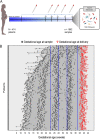

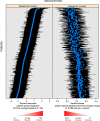
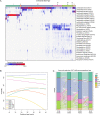


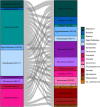
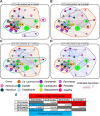
Similar articles
-
Vaginal microbiota in women with spontaneous preterm labor versus those with term labor in Kenya: a case control study.BMC Microbiol. 2022 Nov 10;22(1):270. doi: 10.1186/s12866-022-02681-0. BMC Microbiol. 2022. PMID: 36357861 Free PMC article.
-
Vaginal microbiome diversity and preterm birth: results of a nested case-control study in Peru.Ann Epidemiol. 2020 Jan;41:28-34. doi: 10.1016/j.annepidem.2019.11.004. Epub 2019 Dec 5. Ann Epidemiol. 2020. PMID: 31883841 Free PMC article.
-
A specific bacterial DNA signature in the vagina of Australian women in midpregnancy predicts high risk of spontaneous preterm birth (the Predict1000 study).Am J Obstet Gynecol. 2021 Feb;224(2):206.e1-206.e23. doi: 10.1016/j.ajog.2020.08.034. Epub 2020 Aug 27. Am J Obstet Gynecol. 2021. PMID: 32861687
-
Lactobacillus crispatus dominant vaginal microbita in pregnancy.Ceska Gynekol. 2020 Winter;85(1):67-70. Ceska Gynekol. 2020. PMID: 32414287 Review. English.
-
Lactobacillus iners-dominated vaginal microbiota in pregnancy.Ceska Gynekol. 2019 Winter;84(6):463-467. Ceska Gynekol. 2019. PMID: 31948257 Review. English.
Cited by
-
Effects of the sampling time on the vaginal microbiota in healthy pregnant women: a prospective observational study.AJOG Glob Rep. 2025 Feb 16;5(1):100460. doi: 10.1016/j.xagr.2025.100460. eCollection 2025 Feb. AJOG Glob Rep. 2025. PMID: 40114815 Free PMC article.
-
Vulvovaginitis in pregnant women.Rev Bras Ginecol Obstet. 2024 Apr 2;46:e-FPS03. doi: 10.61622/rbgo/2024FPS03. eCollection 2024. Rev Bras Ginecol Obstet. 2024. PMID: 38765512 Free PMC article. Review.
-
The sow vaginal and gut microbiota associated with longevity and reproductive performance.J Anim Sci Biotechnol. 2025 Jan 7;16(1):6. doi: 10.1186/s40104-024-01140-2. J Anim Sci Biotechnol. 2025. PMID: 39762999 Free PMC article.
-
The Role of the Vaginal and Endometrial Microbiomes in Infertility and Their Impact on Pregnancy Outcomes in Light of Recent Literature.Int J Mol Sci. 2024 Dec 9;25(23):13227. doi: 10.3390/ijms252313227. Int J Mol Sci. 2024. PMID: 39684937 Free PMC article. Review.
-
The Vaginal Microbiota, Human Papillomavirus Infection, and Cervical Carcinogenesis: A Systematic Review in the Latina Population.J Epidemiol Glob Health. 2024 Jun;14(2):480-497. doi: 10.1007/s44197-024-00201-z. Epub 2024 Feb 26. J Epidemiol Glob Health. 2024. PMID: 38407720 Free PMC article.
References
Publication types
MeSH terms
Grants and funding
LinkOut - more resources
Full Text Sources
Medical

